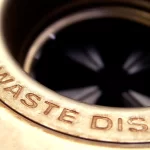With the arrival of the spring thaw and the anticipated rainy season, basement waterproofing becomes a primary concern for Toronto homeowners once again. Even if you’ve never experienced the unpleasantness of flooding, many homes have perpetually wet basements as a result of:
- poor workmanship
- aging infrastructure
- the use of inferior materials
So how do you know whether your basement needs professional attention? Here are X signs to watch out for:
Bowed Walls
“Bowed” foundation walls can usually only be seen from inside the basement unless your home is on a split-level and has a walk-out from the basement. Often, the first time you’ll notice them is if you actually look for the problem, or if you strip them down before painting or renovating.
Bowing is most often caused by the inward pressure of soil around the home, which increases in weight due to the presence of water from heavy rains, poor drainage or inadequate grading. As the water content builds up in the soil it increases the pressure, to the point that your basement walls can possibly collapse if you don’t rectify the problem by repairing the walls and performing quality basement waterproofing.
Cracking and Chipping
Cracked walls may accompany bowing, or they may simply be a sign that the soil around your foundations is unsettled and shifting. The movement results in the appearance of cracks and if you have a finished basement, you may find chips of paint and plaster falling off as the damage spreads.
Apart from the appearance, minor cracks in the walls aren’t themselves too much of a problem, but if you have water in the earth surrounding the foundation the cracks can provide a way to get into the home. Comprehensive basement waterproofing will not only increase your home’s resale value but will prevent this, although you’ll also need to resolve the original problem to prevent the cracks from returning.
Signs of Water
Finding signs of water in the lower level of your home is an obvious indication that you need basement waterproofing. Whether the signs take the form of puddles on your basement floor or beads of moisture on the walls, they show the presence of water that has found a way in. If the problem is found to be on the outside of the home, basement waterproofing may require:
- excavation of some sections of your foundation
- purging the water from the area
- treatment with parging cement
After that, your plumber will coat the walls of the basement with a waterproof substance or install a plastic membrane to prevent moisture from getting in again.
Growth of Mildew
Often, the smallest signs of damp are the only evidence that you might need basement waterproofing. The growth of mildew, for example, occurs so often in older homes that it may easily be ignored as just another indicator of the humid north-east region we live in.
If you see mildew developing in a corner of your ceiling, don’t just clean it up with a bit of bleach. Chances are good it’s from a break in your roof flashing or a leaky water pipe; if you find it in your basement, however, it may be the forerunner of worse to come.
It’s best not to ignore any of the signs that you might need basement waterproofing because the sooner you attend to any problems the less likely you are to incur huge repair bills to do so.






